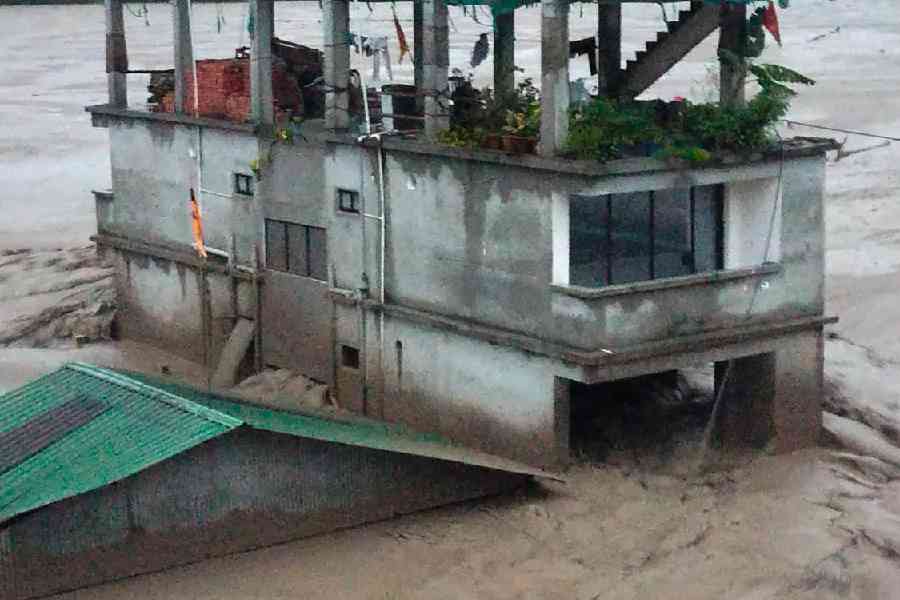The Sikkim government has awarded its majority stake in the 1,200MW Teesta-III hydel project to a private power developer after facing difficulties in clearing its outstanding loan dues of ₹3,200 crore that it borrowed for the project.
The Sikkim Urja Teesta-III dam at Chungthang in north Sikkim was washed away by a glacial lake outburst flood (GLOF) on the intervening night of October 3 and 4, 2023.
The Sikkim government owned 60.08 per cent share in the project.
“In the interest of the state, we have given our shares to Greenko, the second highest shareholder in the project as per the provision of the agreement signed by the previous (Pawan Chamling) government,” said Sikkim chief minister Prem Singh Tamang (Golay).
The Greenko Group is headquartered in Hyderabad.
The Sikkim government, which initially had a share of 26 per cent in the project, increased it to 60.08 per cent in 2012.
Golay had earlier blamed the Chamling-led government for infusing funds in the project at a time when other investors were not interested after the 2011 Sikkim earthquake.
The project was finally completed in 2017 at ₹13,965 crore, and questions were also raised on the cost escalation.
“The project was turning into an NPA, investors were fleeing from this project but the Sikkim government decided to infuse funds and raise the stake from 26 per cent to ultimately 60.08 per cent,” said Golay.
The chief minister further added that the Sikkim government had paid between₹8.53 and ₹10 per share in 2012 when the project was just in the construction phase.
“This share price was fixed without using an independent valuator. In 2021 we used an independent valuator and the shares in 2021 were valued between ₹5.79 to ₹6.12,” said Golay, adding that current share prices were decided after being duly valued.
In the process of increasing its stake, the Sikkim government invested ₹2,700 crore, borrowed from other financial institutions.
Golay said that the government was facing difficulty in paying the loan that had touched ₹3,200 crore. “During a lean period, we had to take loans from State Bank of Sikkim amounting to ₹385 crore to pay loan installments.... If we had not taken this measure, the project would have become an NPA (non-performing asset) and our 60.08 per cent shares would have also gone,” he said.
The Sikkim government had earlier stated that the project had just started generating profits when the GLOF washed away the dam.
“In 2019-20, our earning was ₹203 crore from the project while we had to pay ₹378 to financial institutions. Similarly in 2020-21, our earning was ₹173 but again we had a payment of ₹329 crore to make. In 2021-22, the figure was ₹305 crore (as earning) but we had to pay ₹335 crore,” Golay had earlier said.
It was only during the financial year 2022-23 that the Sikkim government made a profit of ₹32 crore from the project, before the GLOF again turned the tide.
The Sikkim chief minister said that with the decision to exit from the project, the government was now “debt-free.”
“We will now get 12 per cent of free power. This agreement is in tune with other hydel projects in the state,” Golay said.
Recently, the Union environment ministry‘s expert appraisal committee (EAC) has given a clearance for the reconstruction of the Teesta-III dam, leading to protests in Sikkim and beyond.

